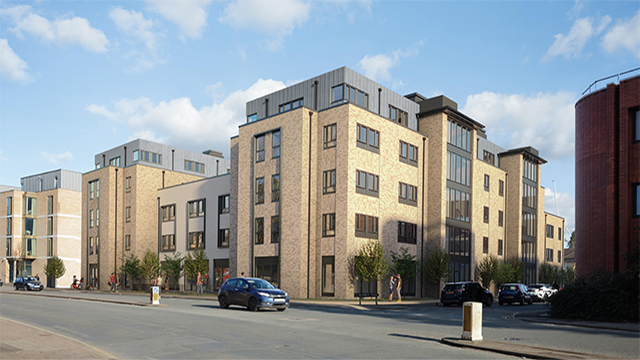‘The North is most at risk of losing out in housing promises’
A slew of new measures to spur housing delivery have been announced in recent weeks – from Sajid Javid’s Planning for the Right Homes in the Right Places (PRHRP) to Theresa May’s less-than-exemplary conference speech – but as we all know there is not a one-size-fits-all solution to meeting the housing supply challenge, writes Simon Grundy, head of planning for the North at Carter Jonas.
The proposed quick fix will inevitably create winners and losers.
While we are all on board with the government’s mantra of fixing the broken housing market in principle, it is disappointing to find that it is the North that would come out bruised from this exchange.
A slew of new measures to spur housing delivery have been announced in recent weeks – from Sajid Javid’s Planning for the Right Homes in the Right Places (PRHRP) to Theresa May’s less-than-exemplary conference speech – but as we all know there is not a one-size-fits-all solution to meeting the housing supply challenge, writes Simon Grundy, head of planning for the North at Carter Jonas.
The proposed quick fix will inevitably create winners and losers.
While we are all on board with the government’s mantra of fixing the broken housing market in principle, it is disappointing to find that it is the North that would come out bruised from this exchange.
It begs the question: What does this all mean for the future of housing delivery across the Northern Powerhouse?
PRHRP came with much fanfare and, amongst other things, proposed a new and simplified method for calculating local housing needs across England.
A clear and more transparent approach will be welcome to most of those involved in planning, as this is one of the main battlegrounds for the examination of local housing plan targets and housing development appeals.
Since the National Planning Policy Framework (NPPF) came into being in 2012, a detailed process for the assessment of requirements along with a widening and frequently disputed set of factors and considerations have been established through planning practice guidance and a multitude of appeals and judicial reviews.
The proposed new methodology aims to slash through this complex jungle to avoid the costly and time-consuming planning implications.
But, as always, the devil is in the detail. At the back of the PRHRP document is a spreadsheet that applies the new methodology to all local planning authorities in England.
For some local authorities the effects would be minimal, while others would see their targets increase over and above those adopted in local plans and core strategies.
Upon further inspection, the targets for London and the South East generally show significant increases.
Meanwhile, Northern Powerhouse authorities will see targets for new homes slashed by around 5,041 per annum.
Yes, it is very much an initial consultation and targets are only indicative, but the new targets will be seized upon by anyone hoping to block development in their area by using the reduced figures to justify their objections.
Now, lest we forget, the Northern Powerhouse agenda’s primary aim when it came into being in 2014 was to secure a vibrant and growing economy through new urban development and refocussing the British economy away from London and the South East.
It would therefore appear that PRHRP is in direct conflict with the very spirit of the Northern Powerhouse.
One must wonder if the government is quietly downgrading the focus on the region in favour of generally boosting productivity outside the South East despite affirmations to the contrary.
Regardless, if Theresa May really wants to “…help the great cities and towns of the North pool their strengths and take on the world” then we need new housing and this does not need to be any more difficult to deliver.
The final nail in the coffin is that we now must wait until the fully tested methodology is published in the revised NPPF – expected sometime in 2018.










